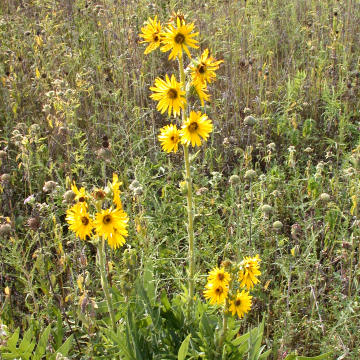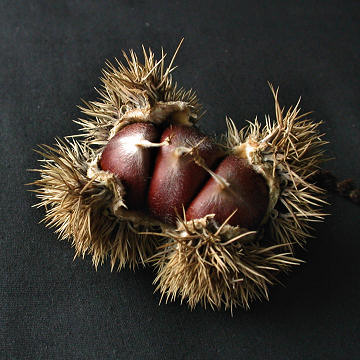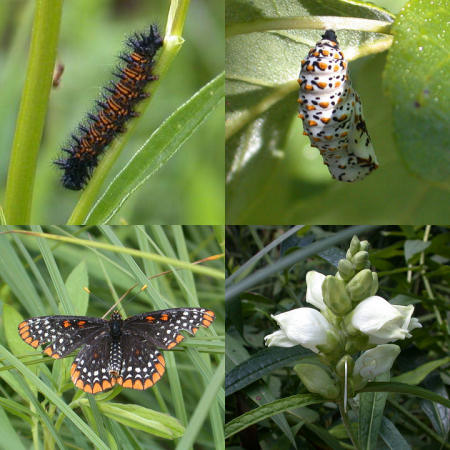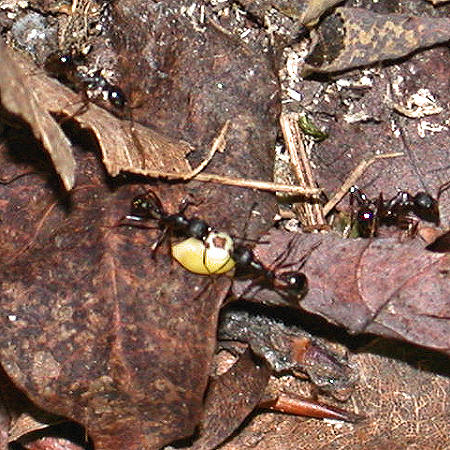
This image is of a Compass Plant (Silphium laciniatum) growing in a prairie restoration in northeastern IL.
One of my favorite books is the Sand County Almanac by Aldo Leopold. It was required reading for a course that I took at community college. This was one of those rare times when, rather than finding it a chore to read an assigned text, I thoroughly enjoyed the book and even read the chapters that were not required for the course. I have read it again several times since. At the time I did not know many of the plants described in Leopold’s essays, but I found the descriptions colorful non-the-less. Having since lived in the Midwest and studied botany there for many years, I can now appreciate the book even more. I would like to share here an excerpt from that book about Silphiums, which are robust, deep-rooted perennials often found in prairies and easy to grow in a sunny garden. Leopold wrote:
“Heretofore unreachable by sythe or mower, this yard-square relic of original Wisconsin gives birth, each July, to a man-high stalk of compass plant or cutleaf Silphium, spangled with saucer-sized yellow blooms resembling sunflowers. It is the sole remnant of this plant along this highway, and perhaps the sole remnant in the western half of our county. What a thousand acres of Silphiums looked like when they tickled the bellies of the buffalo is a question never again to be answered, and perhaps not even asked.
This year I found the Silphium in first bloom on 24 July, a week later than usual; during the last six years the average date was 15 July. When I passed the graveyard again on 3 August, the fence had been removed by a road crew, and the Silphium cut. It is easy now to predict the future; for a few years my Silphium will try in vain to rise above the mowing machine, and then it will die. With it will die the prairie epoch.
The Highway Department says that 100,000 cars pass yearly over this route during the three summer months when the Silphium is in bloom. In them must ride at least 100,000 people who have ‘taken’ what is called history, and perhaps 25,000 who have ‘taken’ what is called botany. Yet I doubt whether a dozen have seen the Silphium, and of these hardly one will notice its demise. If I were to tell a preacher of the adjoining church that the road crew has been burning history books in his cemetery, under the guise of mowing weeds, he would be amazed and uncomprehending. How could a weed be a book?
This is one little episode in the funeral of the native flora, which in turn is one episode in the funeral of the floras of the world. Mechanized man, oblivious of floras, is proud of his progress in cleaning up the landscape on which, willy-nilly, he must live out his days. It might be wise to prohibit at once all teaching of real botany and real history, lest some future citizen suffer qualms about the floristic price of his good life.”
While these plants are easy to grow, they have very deep taproots making them nearly impossible to transplant. The best way to grow them is by directly sowing the seeds. It usually takes two or three years for them to reach sufficient size to bloom, and several more to reach their full potential. Besides Compass Plant, other species include Prairie Dock (Silphium terebinthinaceum), Rosin Weed (Silphium integrifolium), and Cup Plant (Silphium perfoliatum).


